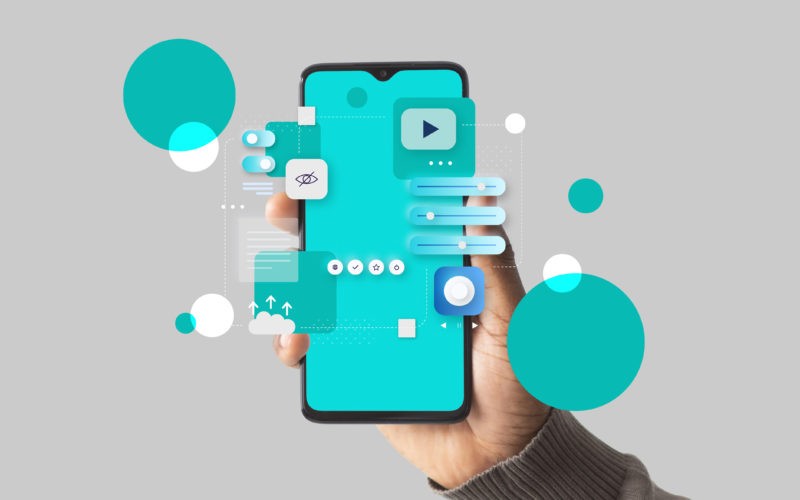Software as a service (SaaS) is a competitive field where, over the past decade, traditional sales strategies have given way to a more user-centric approach: Product-led growth. Whereas previous generations relied more heavily on outbound sales, PLG lets you place the product or service you’re selling at the center of customer acquisition and retention. This shift demands an updated mindset as well as a new set of actions.
By adopting PLG, you learn how to reshape your marketing, engineering, customer access, and product management teams. You’ll learn how to improve alignment and collaboration across all of your departments. In turn, those departments will learn how to prioritize their work around the product. PLG redefines roles, and we’re going to show you six examples of how this is happening.
Product and Marketing: A Shared Growth Mandate
In the past, marketing and the actual product functioned less like siblings and more like distant cousins. With PLG models, they operate more in tandem to drive a growth engine. Marketing is now about more than just generating leads; it’s also about driving product awareness through scalable channels like SEO, content marketing, and lifecycle campaigns. This makes sense, given that all of those factors are tied directly to product usage.
The mutually-beneficial synergy between product and marketing becomes even more powerful when it’s supported by external partners. As PLG gains traction, SaaS SEO agencies often help product teams position features around high-intent search demand. These agencies help identify high-intent search terms that will align with product capabilities.
This makes sure that features are not only discoverable but also positioned clearly and transparently in the market. Tying search demand to in-product functionality means that SaaS companies can boost incentives like trial signups and conversions organically.
Balancing Velocity with Customer-Centricity in Your Engineering Teams
In a business that prioritizes PLG, engineering teams might end up with more responsibility than they had before. Where other business styles might only really require them to create and chip code, putting the product as lead growth factor requires them to also focus on the user journey. PLG engineering teams need to create intuitive onboarding flows, in-app guidance tools, and constantly update based on usage analytics.
Essentially, engineering teams become part of the customer experience conversation. Decisions made by them directly impact metrics for activation and retention. The key to this is collaboration. Engineering teams must collaborate clearly and effectively with product management and design teams.
By implementing cross-functional teams, the focus shifts to outcomes rather than just features. Instead of working on releasing a new dashboard update as a work goal, it becomes improving time-to-value for new users via the vehicle of a new dashboard update.
Shifting from Support to Enablement to Achieve Customer Success
Traditional SaaS models have the customer success (CS) team stepping in once a sale has been made. This is to help with onboarding and prevent customer churn, which is a valid approach for some, but not how it’s done in a PLG environment.
The PLG model considers that the customer begins their journey with a product before they ever speak with a human being. The CS team is tasked with focusing less on accompanying the customer on an individual basis and more on the at-scale approach to enabling user success.
Thanks to this shift, there’s now more focus on self-service resources. A website can provide knowledge bases, community forums, and in-app tutorials that a user can freely access. Removing these barriers to further information and progress reduces friction in the user’s initial path to purchase.
The CS team is also responsible for identifying opportunities for expansion. This is done by monitoring product usage patterns and encouraging high-potential accounts toward premium features. By working hand-in-hand with product and marketing teams, the insights garnered can be funneled into content strategy and product development.
Sales Are Evolving Toward Consultative Engagement
PLG can sometimes have the inaccurate reputation of being a “no-sales” model. On the contrary, most companies with a successful PLG strategy still have a sales team and utilize it to focus on high-value customer conversion and enterprise accounts.
The main difference between the two is that with PLG, the user experiences the product first, and the sale itself comes later. This is decidedly different from the traditional method of sales operation, which often involved pushing demos and contracts from the first point of contact.
With PLG, sales reps act more like product consultants and help users understand how the product or service will help them and why premium and advanced features may be worth paying a little more.
Data and Analytics Are the New Strategic Nerve Center
Data teams are central to the functionality of a PLG strategy. It’s important to understand how a user moves around and through the product, and data teams provide that insight to be used toward growth.
Analytics are the backbone of every function and every team. For example, product analytics data guides sales teams and guides the direction of outreach. Information like which accounts are hitting usage milestones or who may be showing upgrade intent allows them to know who to pursue. With this data-driven approach, product and analytics teams work more closely with sales.
It isn’t just sales. Marketing teams depend on funnel and attribution data to refine their strategies of acquisition strategies. Product management teams track activation and retention metrics, and that allows them to know which features to prioritize for development. CS teams use behavioral insights to help them identify users who are at risk and act before they cancel their contracts.
Final Thoughts
Go-to-market strategies have had their place in sales, but it’s time for a structural shift in how SaaS companies today operate. PLG data has proven that growth can be accomplished by redefining how teams collaborate, evaluating how different priorities are set, and changing how success is measured.
Finding success and stability for your business in a PLG environment isn’t only about having a great product that people want to use or buy. It’s also about creating a culture where every team along the way contributes to making that product the most effective sales, marketing, and support tool your company has.












